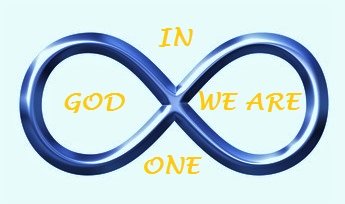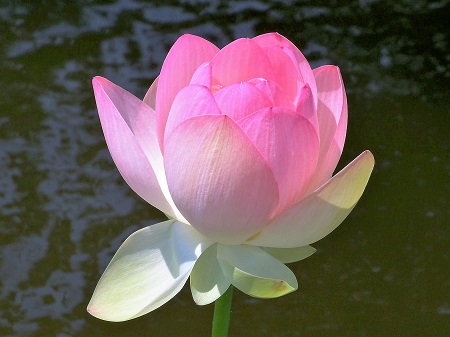Springtime Celebrations: A Journey Through Faith and Tradition
Spring, the season of renewal and rebirth, has long been a time of significant religious celebrations across various cultures and faiths. These celebrations often share common themes of renewal, rebirth, and the triumph of life over death. In this article, we will explore some of the major religious celebrations that take place in the spring and delve into their meanings, customs, and shared themes.
Easter: The Resurrection of Christ
One of the most prominent springtime religious celebrations is Easter, a cornerstone of the Christian faith. Easter commemorates the resurrection of Jesus Christ from the dead, an event that signifies victory over sin and death. Celebrated on the first Sunday after the first full moon following the vernal equinox, Easter is a movable feast that can fall anywhere between March 22 and April 25.
Customs and Traditions
Easter traditions vary widely across different Christian denominations and cultures. Common practices include attending church services, participating in processions, and sharing festive meals. One of the most iconic symbols of Easter is the Easter egg, which represents new life and rebirth. Decorating eggs, holding egg hunts, and giving chocolate eggs are popular activities, especially among children.
Another widespread custom is the Easter Vigil, a service held on the evening of Holy Saturday. This service includes the lighting of the Paschal candle, symbolizing the light of Christ returning to the world.
Passover: The Festival of Liberation
Passover, or Pesach, is one of the most important Jewish festivals, celebrated in early spring. It commemorates the liberation of the Israelites from Egyptian slavery, as described in the Book of Exodus. Passover begins on the 15th day of the Hebrew month of Nisan and lasts for seven or eight days, depending on Jewish tradition.Customs and Traditions
The central event of Passover is the Seder, a ritual meal held on the first two nights of the festival. During the Seder, families gather to retell the story of the Exodus, read from the Haggadah, and partake in symbolic foods. These foods include matzah (unleavened bread), maror (bitter herbs), and charoset (a sweet mixture representing the mortar used by the Israelites in their forced labor).
Another key aspect of Passover is the removal of chametz (leavened products) from homes, symbolizing the haste with which the Israelites left Egypt, not having time to let their bread rise. This practice highlights themes of purification and renewal.
Holi: The Festival of Colors
Holi, celebrated primarily in India and Nepal, is a vibrant Hindu festival that marks the arrival of spring and the victory of good over evil. Known as the "festival of colors," Holi usually falls in March, on the full moon day of the Hindu month of Phalguna.
Customs and Traditions
Holi is renowned for its exuberant and joyful celebrations. People gather in streets and open spaces to throw colored powders and water at each other, symbolizing the arrival of spring and the end of winter. The festival also includes singing, dancing, and festive foods.
The night before Holi, many communities light bonfires to celebrate Holika Dahan, which signifies the burning away of evil. This ritual is based on the legend of Prahlad and Holika, where the demoness Holika is defeated by the devotion and purity of Prahlad.Nowruz: The Persian New Year
Nowruz, meaning "new day," is the Persian New Year and is celebrated by millions of people across various cultures, including those in Iran, Afghanistan, and parts of Central Asia. Nowruz marks the first day of spring and the beginning of the year in the Persian calendar, usually falling on or around March 21.
Customs and Traditions
Nowruz celebrations often last for about two weeks and include a variety of customs aimed at symbolizing renewal and rejuvenation. One of the most important traditions is the Haft-Seen table, which includes seven items starting with the Persian letter 'S' that represent health, wealth, and prosperity. These items often include sabzeh (sprouted grains), samanu (sweet pudding), and seer (garlic).
Another significant practice is "spring cleaning," where households are thoroughly cleaned to welcome the new year. This is often accompanied by the wearing of new clothes and visiting friends and family to exchange gifts and good wishes.
Vesak: The Buddha's Birthday
Vesak, also known as Buddha Purnima, is a major Buddhist festival that commemorates the birth, enlightenment, and death of Gautama Buddha. Vesak is celebrated on the full moon day of the month of Vaisakha (usually in April or May), making it an important springtime festival in the Buddhist calendar.Customs and Traditions
Vesak celebrations vary among different Buddhist communities, but common practices include visiting temples, meditating, and listening to sermons about the Buddha's teachings. Many Buddhists also engage in acts of charity, such as giving food to the needy and releasing captive animals as a symbol of compassion.
Temples and homes are often decorated with lanterns, and processions with illuminated floats are a common sight. In some countries, devotees bathe statues of the Buddha as a symbolic act of purification.
Common Themes of Springtime Celebrations
While these springtime religious celebrations come from different cultures and faiths, they share several common themes:Renewal and Rebirth
A central theme in many springtime celebrations is renewal and rebirth. This can be seen in the Christian celebration of Easter, which commemorates the resurrection of Jesus Christ, and in the Jewish festival of Passover, which marks the liberation and new beginning for the Israelites. Similarly, the throwing of colors during Holi and the sprouting of grains for Nowruz symbolize the renewal of nature and life.
Triumph of Good Over Evil
Many spring festivals celebrate the victory of good over evil. Holi, for example, celebrates the defeat of the demoness Holika by the virtuous Prahlad. Easter celebrates Christ's victory over sin and death, while Vesak honors the enlightenment of the Buddha, symbolizing the triumph of wisdom and compassion over ignorance.
Community and Togetherness
Springtime celebrations often involve coming together as a community. Passover Seders, Easter services, Holi gatherings, Nowruz visits, and Vesak temple activities all emphasize the importance of community and shared experience. These celebrations provide an opportunity for families and communities to reconnect, celebrate their heritage, and strengthen their bonds.
Purification and Preparation
Many of these festivals include rituals of purification and preparation. The cleaning of homes for Nowruz, the removal of chametz for Passover, and the lighting of bonfires for Holika Dahan all symbolize a cleansing process that prepares individuals and communities for renewal and new beginnings.
Conclusion
Springtime religious celebrations offer a rich tapestry of traditions, customs, and rituals that reflect the diverse ways in which different cultures welcome the season of renewal. Despite their varied origins and practices, these celebrations share common themes of renewal, rebirth, the triumph of good over evil, and the importance of community. As we participate in or observe these festivals, we are reminded of the universal human desire for renewal, connection, and the celebration of life's enduring spirit.

